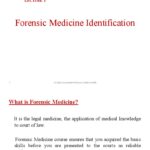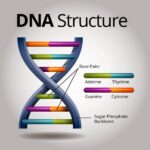Ever wondered how a minuscule speck of genetic material can be transformed into a quantity large enough to study? It’s not magic, but it does involve a rather ingenious molecular technique: Polymerase Chain Reaction, more commonly known as PCR. But how does this work, exactly?
Imagine trying to find a single, specific book in a library the size of a city. Now imagine needing multiple, identical copies of that book. That’s the challenge PCR elegantly solves, but on a microscopic, molecular scale. It allows us to amplify a specific segment of DNA, the blueprint of life, exponentially. Let’s delve into the specifics, shall we?
The Fundamental Components: The Molecular Cast
PCR isn’t a one-man show. It requires a carefully assembled ensemble of molecular players, each with a crucial role:
- DNA Template: This is the initial DNA sample containing the segment we want to amplify. Think of it as the original manuscript. It’s the blueprint that will be copied.
- Primers: Short, synthetic DNA sequences, typically 18-25 nucleotides long, that are complementary to the regions flanking the target DNA sequence. These act like molecular signposts, defining the start and end points of the amplified region. They are crucial for specificity.
- DNA Polymerase: The workhorse enzyme responsible for synthesizing new DNA strands. A thermostable DNA polymerase, such as Taq polymerase derived from the bacterium Thermus aquaticus, is essential. This enzyme can withstand the high temperatures required in PCR without denaturing.
- Deoxynucleotide Triphosphates (dNTPs): The building blocks of DNA – adenine (A), guanine (G), cytosine (C), and thymine (T). These are the raw materials used by the DNA polymerase to construct the new DNA strands.
- Buffer Solution: A chemical environment that provides the optimal pH, salt concentration, and other conditions necessary for the enzyme activity and DNA stability.
The Three-Step Cycle: A Molecular Tango
PCR proceeds in a cyclical process, typically repeated 25-35 times, each cycle consisting of three distinct temperature-dependent steps:
- Denaturation (94-98°C): The reaction mixture is heated to a high temperature, typically between 94°C and 98°C. This heat disrupts the hydrogen bonds holding the two strands of the DNA double helix together, causing them to separate, creating single-stranded DNA templates. This unwinding of the double helix is crucial for primer annealing.
- Annealing (50-65°C): The temperature is lowered to allow the primers to anneal, or bind, to their complementary sequences on the single-stranded DNA templates. The annealing temperature depends on the length and sequence of the primers. Too low, and the primers may bind non-specifically. Too high, and they may not bind at all. This stage requires precision.
- Extension (72°C): The temperature is raised to the optimal temperature for the DNA polymerase to extend the primers and synthesize new DNA strands. Taq polymerase has its optimal activity around 72°C. The polymerase binds to the primer-template complex and adds dNTPs to the 3′ end of the primer, extending the new DNA strand in the 5′ to 3′ direction.
Exponential Amplification: From Single Strand to Millions
Following each cycle, the number of DNA copies doubles. This exponential amplification is the power behind PCR. Starting with a single copy of the target DNA sequence, 30 cycles of PCR can generate over a billion copies. This makes even trace amounts of DNA detectable and analyzable. It’s like a molecular Xerox machine working at lightning speed.
Specificity: Targeting the Right Sequence
The specificity of PCR relies heavily on the primers. Primers are designed to be highly specific to the target DNA sequence. The more carefully designed the primers, the less likely they are to bind to other regions of the genome. This ensures that only the desired DNA fragment is amplified. Mismatches between the primer and the template can reduce amplification efficiency or prevent amplification altogether.
Applications: A Molecular Swiss Army Knife
PCR has revolutionized many fields, including:
- Diagnostics: Detecting infectious diseases, identifying genetic mutations, and diagnosing cancers.
- Forensics: Analyzing DNA samples from crime scenes to identify suspects.
- Research: Cloning genes, studying gene expression, and developing new therapies.
- Archaeology: Analyzing ancient DNA to study human evolution and migration patterns.
Limitations and Considerations: The Nuances of Amplification
Despite its power, PCR is not without its limitations:
- Contamination: PCR is highly sensitive and susceptible to contamination. Even a tiny amount of contaminating DNA can be amplified, leading to false positive results.
- Primer Design: Poor primer design can lead to non-specific amplification or failure to amplify the target DNA.
- Amplicon Size: PCR is typically used to amplify DNA fragments less than 3 kb in length. Amplifying larger fragments can be challenging.
- Error Rate: Taq polymerase lacks proofreading activity, which means it can introduce errors during DNA synthesis.
In summary, PCR is a remarkable technique that allows us to amplify specific DNA sequences exponentially. Through denaturation, annealing, and extension, PCR enables researchers and clinicians to study and manipulate DNA in ways previously unimaginable. Understanding its intricacies and limitations is crucial for its effective application.










Leave a Comment